|
21st December 2019 It's the last Saturday night before Christmas and we're at Matakishi's for some board games. This is a game about accumulating stocks in railway companies, running railway companies and paying out dividends. Yep, this is 'Irish Gauge' and not 1830. Irish Gauge is a game that simultaneously is the same as and also completely different to 1830. That is, it shares the same themes as 1830, but is a quite different game. What's in a game? Irish Gauge components.
How's it play? We begin with setup, which is pretty simple.
Initial auction Before normal play commences, there is a 'initial auction' This is where players get to bid on and auction one share from each of the 5 companies.
In their turn, the active player can perform 1 of 4 actions, these are: Place track, place a special interest, auction a share and call for a dividend. Place track: This is probably the most common action in the game
Endgame The game ends when there are no more cubes in the bag, either because of a dividend being called or placing a cube as a special interest on the board. All players tot up their cash plus the initial value of the shares they own. Highest cash wins. Overall
Irish Gauge is a railway building game with stocks and shares and companies. It's actually quite a common theme in board games. But Irish Gauge plays nothing like any of these other games. It seems like the basic strategy is that players need to build railways, to issue dividends, to buy shares. Simple, right? Not necessarily. Whilst players may want to maximise their railway network before calling dividends, to get as much money as possible to have more funds when bidding on shares during an auction. Waiting a long time to buy shares is a risky move. Why? There limited opportunities to call for dividends because when the game starts, there will only be 22 cubes in the bag and each dividend uses 3 cubes. So there's maximum of 8 times a dividend can be called - and the last dividend will be with 1 cube! This is of course, provided nobody uses cubes to upgrade towns. So shares bought later in the game will benefit less because there will be less dividend pay outs. This isn't so bad if you get a shares at the initial value, but that's unlikely to occur. So paying an extra 20 to get a share that only pays out 5 twice is actually a loss of 10! This means players will want to get shares as quick as possible, but at the same time, it's prudent to wait and see if other players have low funds as this is a great time to trigger an auction, since they may have to pass, giving the active player a share at the initial value. It's like some sort of horrible balancing act. There's more as well. If a player thinks they benefit from a dividend more than anyone else, then they might ignore buying shares or improving their network and may just call dividend after dividend and 'run out' the game. However there's a random element to dividends, so they may scupper themselves. After playing the game a couple of times: It seems to me that how a player places their railway lines is a bit of a 'no-brainer'. But on reflection I don't think this is as much of an issue as I first thought. Perhaps when to call for dividends may seem more vital for the game than anything else - provided the right cubes are pulled from the bag of course. There's a lot to think about here, which is good. Finally, Irish Gauge plays as fast as a roadrunner with it's backside on fire. If you're used to slow and meaty railway games, Irish Gauge may feel quite fresh with it's relatively short play time. I'm not certain if Irish Gauge will stand up to extended play. But it's worth giving it a couple of plays at least.
0 Comments
17th December 2019
It's a Tuesday at 'The Sovereigns' in Woking. We're not playing any games tonight. It's the 3rd annual quiz night. Unlike the previous 2 quiz nights, there's no buffet this time. instead everyone contributes £2 and the money goes to a worthy cause as chosen by the winners! We were split into 4 teams of 4 people and the rest of the evening was spent answering unreasonably tricky questions set by the nefarious quiz master. By the end, 3 teams finished on the same score! So it went to a tie breaker - and my team won! We then had a quick game amongst our team and Niek won. £55 was donated to the charity of Niek's choice - Shelter. And a good time was had by all! This was also our final gathering of the year, since the next 2 Tuesdays fall too close to Christmas and New Year's day. 14th December 2019 Threads - Part 02Saturday is here at Matakishi's for the next session of 'The Cthulhu Hack'
At the end of the last session, we entered the mysterious black tent. It lead us to a strange looking town square. There were painted houses on wooden walls, a clown car and an empty 'Punch & Judy' stall. Whilst we are discussing out next move Punch and Judy appear and they begin fighting with each other. Then floating appear and take them away. 'That's the way to do it!'... I guess... We find a door and go through it, weirdly it leads to a strange police station. What follows is another strange series of events where we encounter one strangely distorted character from Punch & Judy after another, as well as strange locations. Eventually we find a poem. After reading it, we realise that the poem is telling us to find a number of items related to the clown car. We go about finding these items, this leads us to finding Lydia Little - Earnest's wife. we also encounter a friendly little dog. We manage to collect the items and return to the clown car. Fit all the items in, get in the car and drive away. We then find ourselves in a new strange place, what appears to be The Dreamlands! Surprisingly, the friendly little dog has now become a cat! To be continued. 10th December 2019
Tuesday night at 'The Sovereigns' with the Woking board game club continues. The final game of the night was 'Codenames'. You can read my blog about it here. 10th December 2019 It's a Tuesday evening in Woking and we're at 'The Sovereigns' with the board game club. The first game of the night was 'Cockroach Poker'. Now I mean this in a good way: But Cockroach Poker is quite possibly the most horrible game of all time. It's a horrible game all about horribly lying and bluffing. At the end of one game a player said to me. "Can we please now play a game where we don't all hate each other!". That sums Cockroach Poker pretty nicely. What's in a game? Cockroach Poker consists of nothing more or less than a deck of 64 cards. There are 8 types of card (All based on types of 'horrible' creature.) and 8 copies of each type. Because my blog demands a bullet-point list, i thought I'd list what's on the cards. All the cards are well illustrated with stylised pictures of all the 'creepy-crawlies'. The art hasn't skimped on either, there could have been just 8 illustrations for the 8 types. But they are different pictures for each card, so 64 in total.
How's it play? Setup: Deal out the entire deck to all players. Players must keep their hand of cards secret. Cockroach Poker is a game about trying to guess whether the other players are speaking the truth or lying through their teeth
Endgame Their are 2 ways the game can end. The game will immediately end when any player has put the 4th card of a single type into their playing are. Or when any player must play a card to another player, but has no more cards in their hand. In both cases, when this occurs, that player is the loser and all other players are winners! Overall
Cockroach Poker is a clever little bluffing game. Telling the truth is equally bad for players as lying, so there's no 'easy' get-out by telling the truth. Having a card pushed towards and trying to guess whether your 'friend' is lying or not can be a stress. But when a player chooses to pass the card, it doesn't get them out of hot water. It just changes the source of the stress, now players are hoping that their opponents are can't see through their statement. I've also seen players counting the number of cards that have already been played before making a choice. But it doesn't matter because the whole deck has been dealt out to players! Not only is the game negative and horrible, so is the end. The game only plays to the first loser and everybody else wins! No one wants to be the sole loser! So in summing up: Cockroach Poker is a horrible, horrible game and everyone should play it. 8th December 2019
Sunday at 'The Sovereigns'. The 50 Fathoms hiatus continues, so board games it was. We played 'Just One' See my blog about it here. 7th December 2019 Threads - Part 01So it's a Saturday and we're at Matakishi's for some tabletop goodness. Tonight we are playing in the next of Matakishi's Cthulhu Hack scenarios, promisingly (Or not promisingly in reality.) title 'Threads'. It had been a while since an event had drawn the interest of the little group of investigators that we are.
We were approached by an individual wanting us to investigate the disappearance of a nine year old boy from a birthday party. They believed this had something to do with the clown that they had hired. This led to an unusual string of events. Even more children (And some adults.) had gone missing. We encountered strangely feral children on bicycles that turned out to be some sort of stunted dwarf. A weird clown that ran away from us with a unnatural gait. Bizarre and mesmerising flyers. Finally, webs, lots and lots of webs, everywhere. During our investigation many of our leads pointed towards a single location. A newly opened restaurant. Eventually, things came to ahead and during the hours of darkness, we broke into the restaurant. What we found withing is not be discussed here, but we did manage to find a rescue Ernest Little, one of the adults that had gone missing. Earnest's wife, Lydia was still missing. Further investigation led us to a black tent on the local heath. We went to investigate. With us with had Earnest, looking for Lydia. Also with us was Casper Jasper an expert of spiders we had encountered. We entered the tent and found ourselves somewhere strange. To be continued. 3rd December 2019 It's Tuesday at 'The Sovereigns' in Woking with the board game club. This means board games! And tonight we played 'Wayfinders'. 'Those magnificent men, in their flying machines.' 'They go up tiddly up up.' 'They go down tiddly down down.' That's enough of that! Wayfinders is a colourful little game about flying and exploration. It's also a fairly light worker placement and resource management game. What's in a game? Wayfinders is played over a 5x5 grid of tiles:
Apart from the aforementioned worker meeple issue, all the components are solidly made and bright and colourful. On the island tiles. All the resources are delineated by both colour and symbol except for the resource in the bottom right corner, which is represented only by colour. However the resource tokens appear to have their symbols printed on them and they may wear off over time and use. How's it play? Setup.
In Wayfinders, there are only 2 main actions, although the 2nd action has a number of sub actions that can be performed. 1st action, place a worker:
Acquire resources. Travel. Build hangars. Endgame The endgame is triggered when a player has 2 or less hangars remaining in their supply. The current round is completed and scoring commences. Resource and Permanent effect tiles have a static score. But scoring tiles tend to have scores dependent on what the player as achieved in the game. For example: A scoring tile might score 3 points for each tile in the same vertical line as itself that the player has put a hangar on to. Unused resources and workers on the hangar board in the endgame also score. Final scores are tallied, highest score wins. Overall
Wayfinders is a pretty simple game, but there's a couple of interesting things going on in this game. Acquiring resources is an unusual blend of worker placement and drafting with a dash of push your luck. Players will probably find themselves competing over certain resources, particularly if that resource is scarce in the hangars. This can lead to some tricky decisions. A player can keep putting down workers so that when they are returned, the player will get the maximum resources. But if that player needs a certain resource, this delay can lead to them losing that resource to another player. Or perhaps a player needs a resource that is 3rd in line at the hanger. Do they try and play 3 workers to get at it? Or do they place a single worker and hope that someone takes a resource ahead if it. Watching where other players put their workers can be insightful. Whilst there is little direct interaction in Wayfinders, particularly on the tiles. Another reason to watch what other players do, is that when they place a hangar in a tile, that tile becomes accessible to other players for free. This can make it easier to reach tile beyond it and will open up the playing area and also open up more choices and strategies. Conversely, getting to a tile that may prove popular with other players and putting a hangar on there first is a great way to earn resources as other players must pay to you instead of the bank. This is a lot more useful than it sounds. After moving a plane and placing hangars, a player can only retain 3 resources. So even if that player maximizes the placement of their workers, they can only start a move and build action with a maximum of 8 resources. However if during a round other players have to pay out to you to put their hangars down, it's possible to start with a lot more resources. This can be a great advantage, as being able to put down 2 or 3 hangars in a turn really lays pressure on other players as they'll be forced to play catch up. Remember, players start with 10 hangars, but 1 goes on the home tile, so in reality everyone starts with 9 hangars. And the endgame is triggered when any player reaches 2 or less hangars left. So a player only needs to place 7 hangars to trigger the endgame. As well as being a fairly easy game to learn, Wayfinder is a quite short game and playing speeds up over the course of a game as the board inevitably opens up. Optimizing your actions and taking advantage of circumstances are key to winning. A canny player can end the game abruptly, leaving their competitors in the lurch. The only criticism I have is that it's a little too long for a filler game, but a little short for a main game. But that criticism aside, Wayfinders is a easy to learn and fairly fun game to play. 1st December 2019
Sunday at 'The Sovereigns' in Woking. The 50 Fathoms hiatus continues. So it's board games again. Today we played codenames. Read my blog about it here. |
AuthorI play, I paint. Archives
March 2024
Categories
All
|

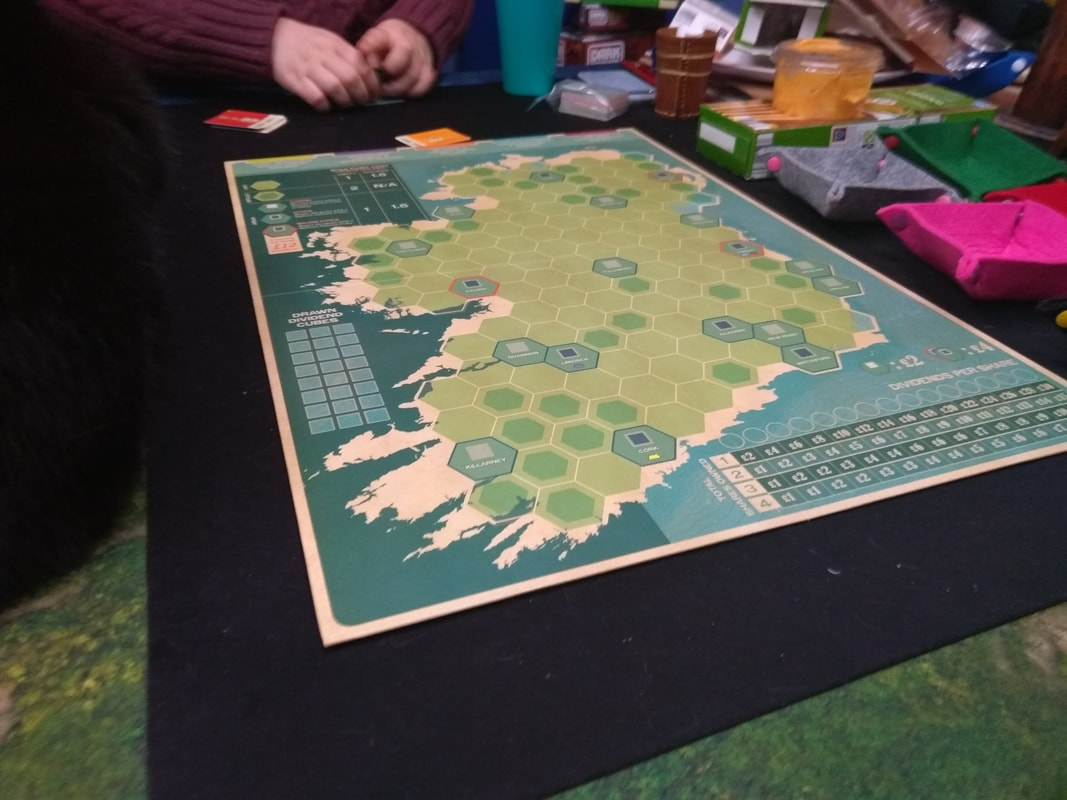
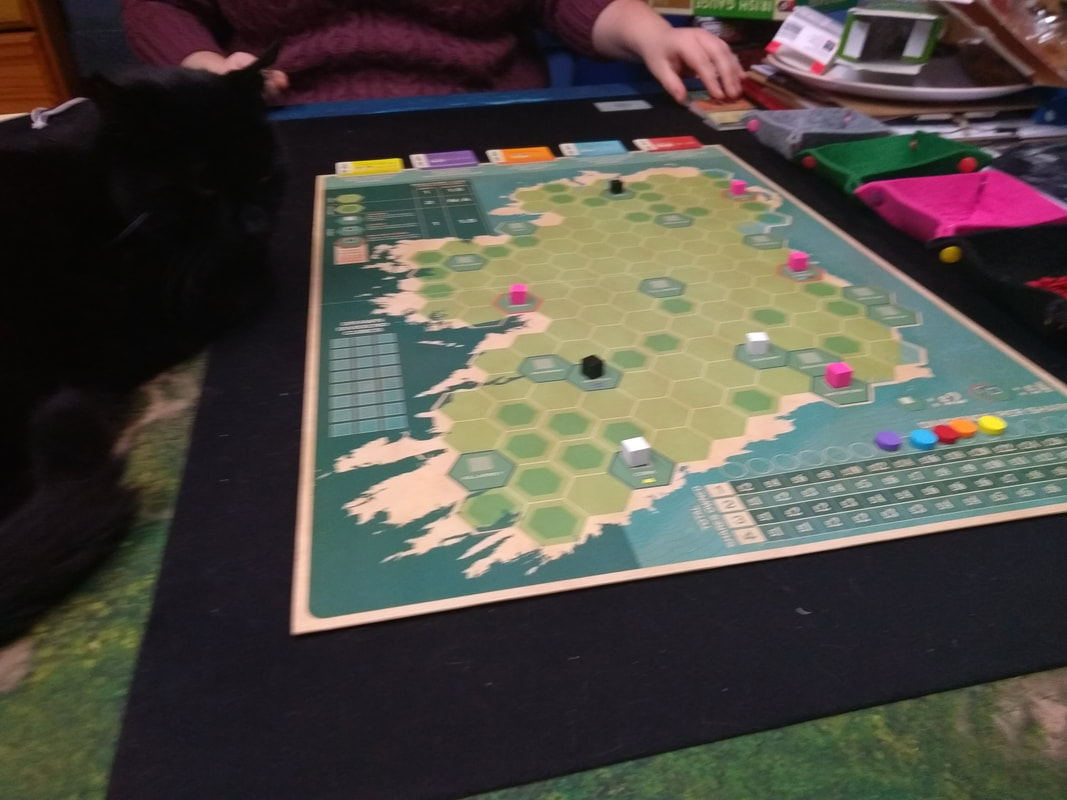
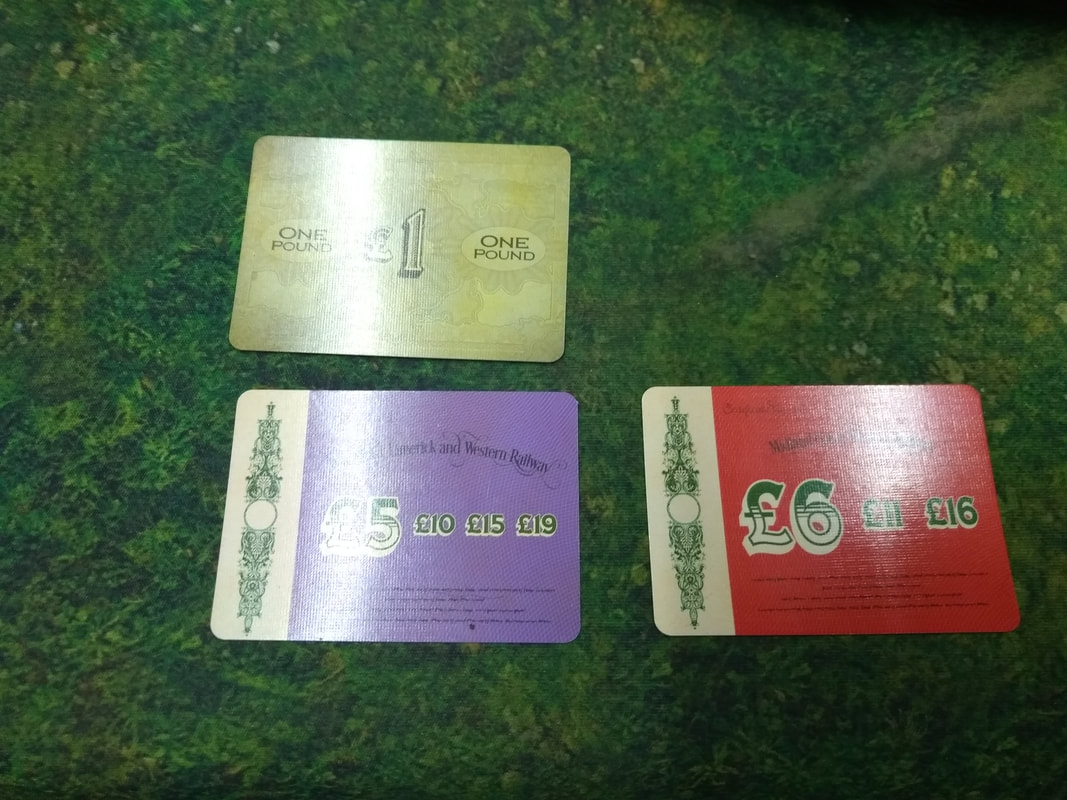

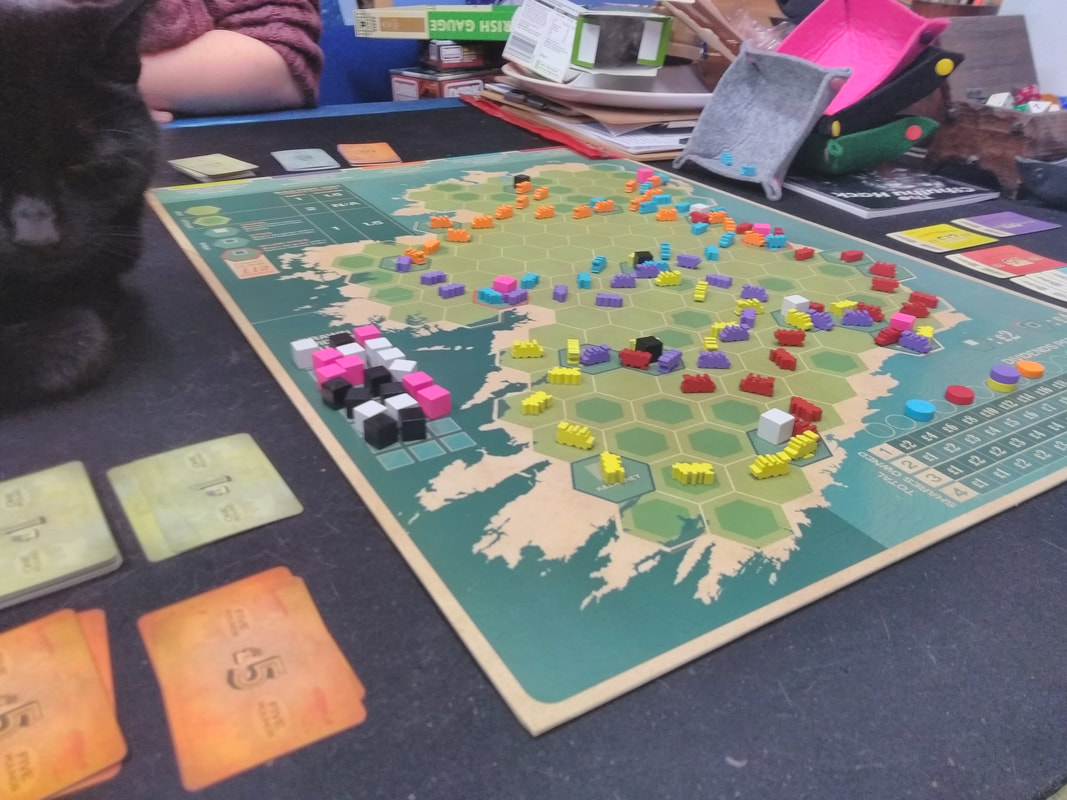
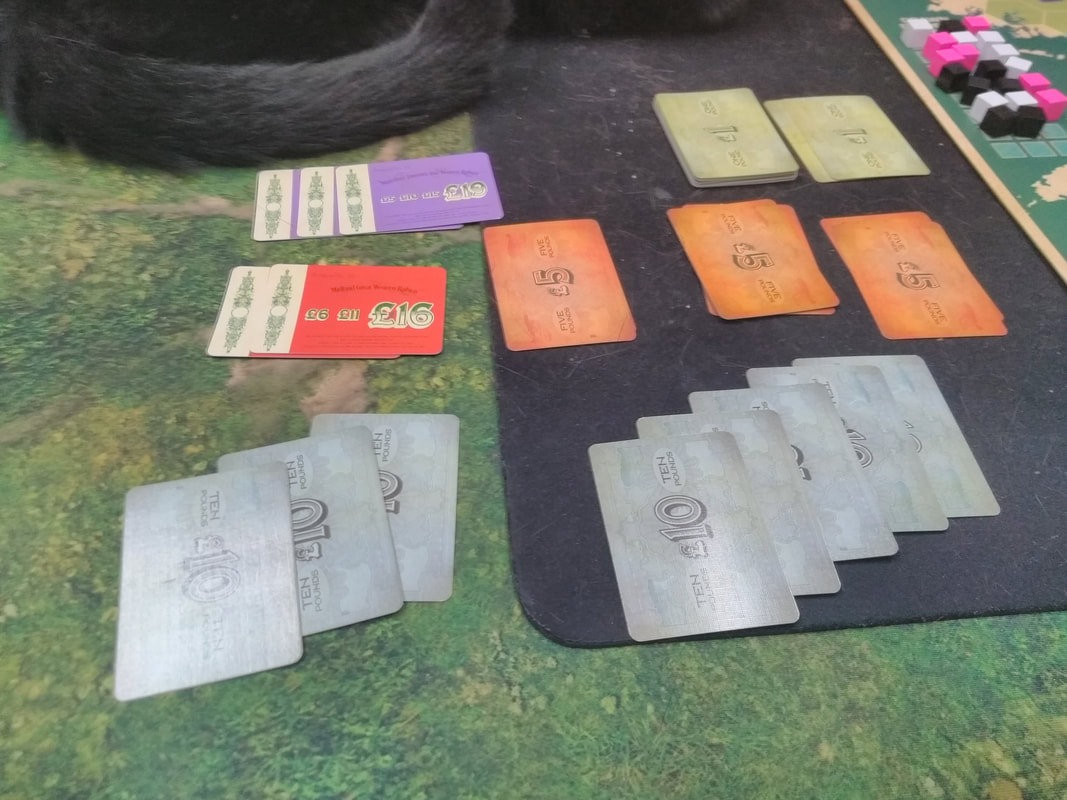

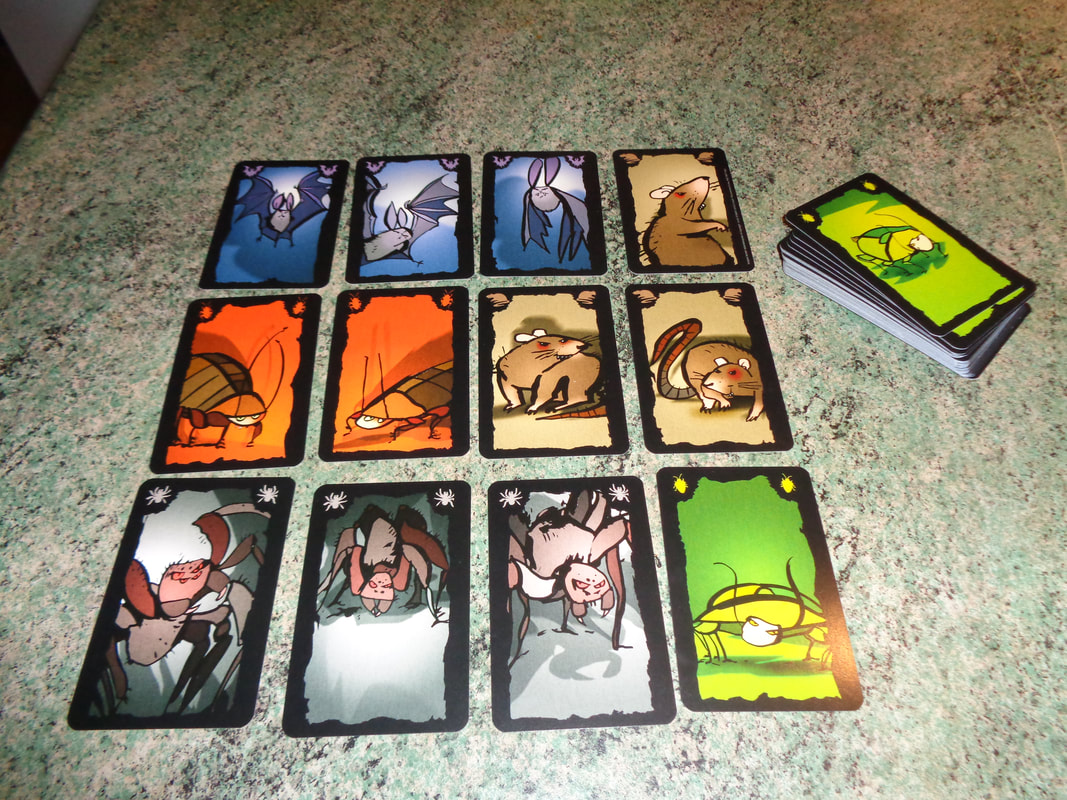
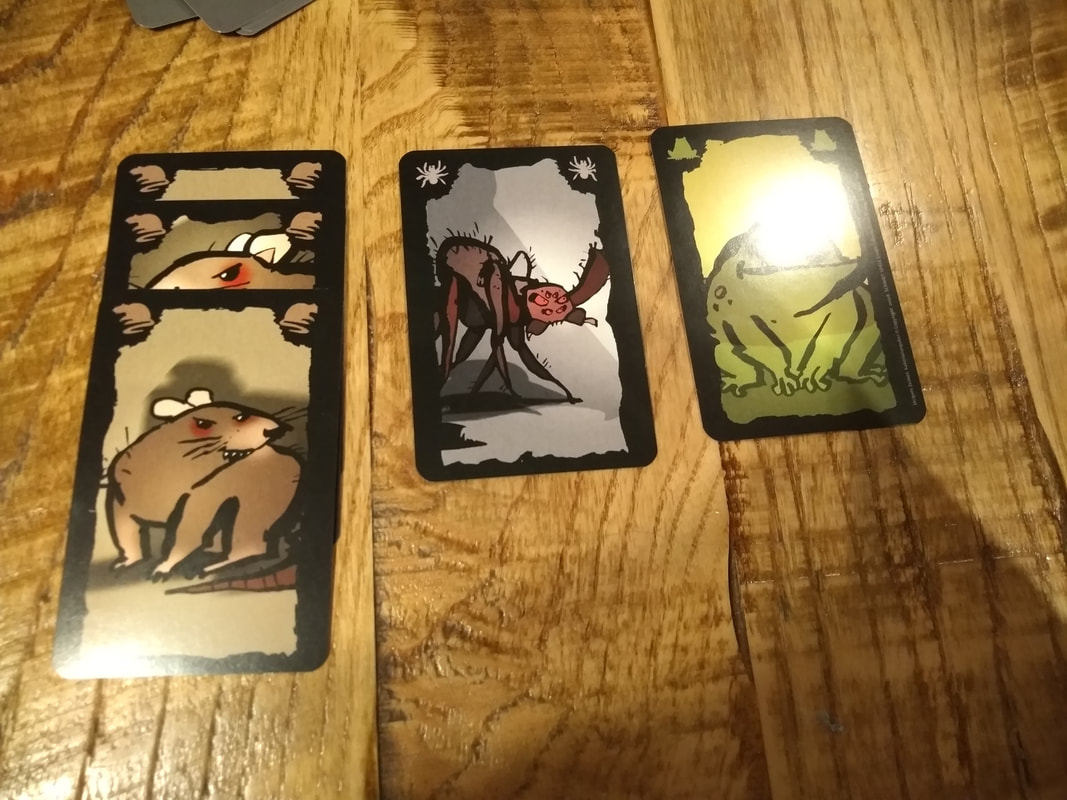
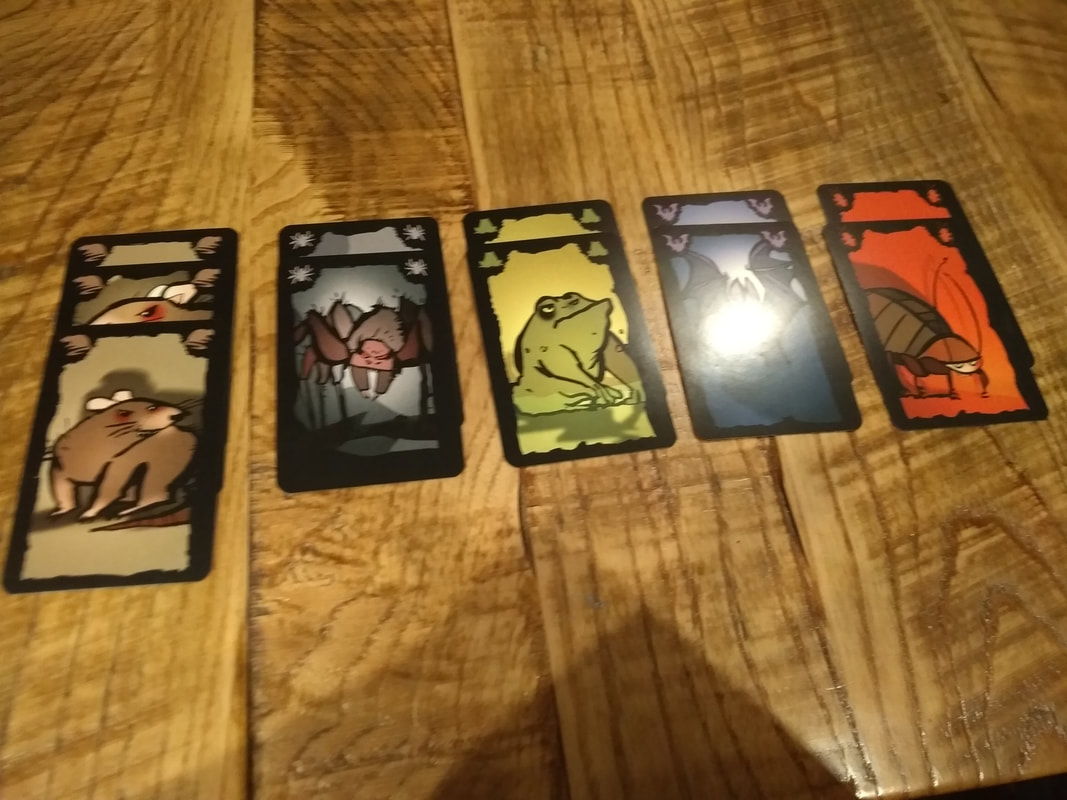
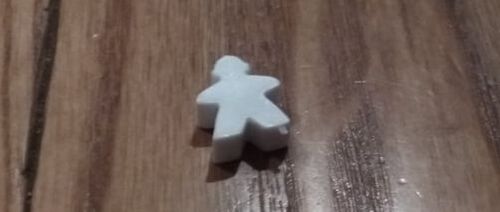
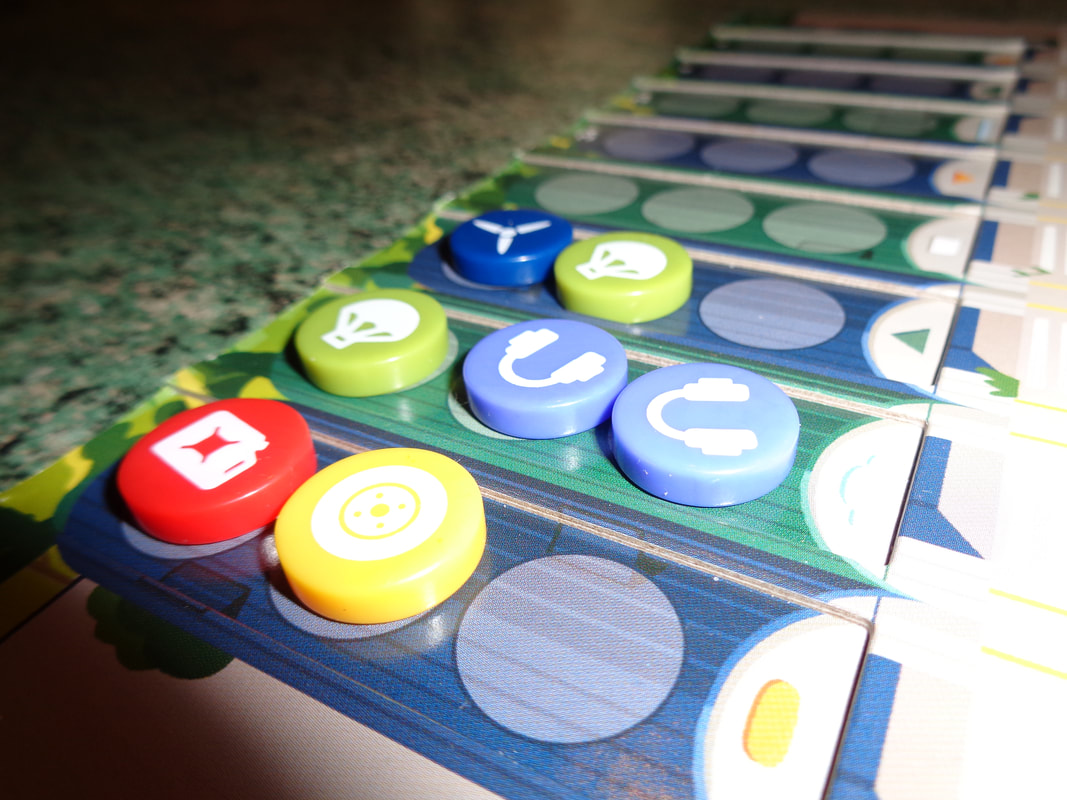
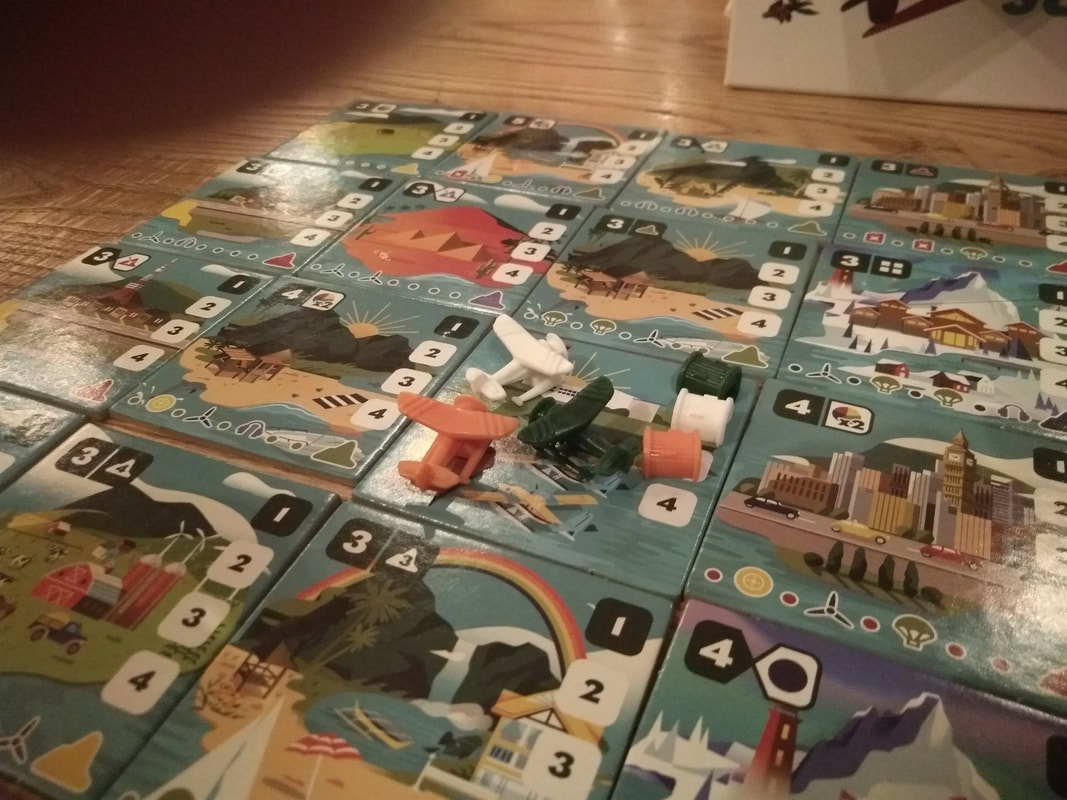
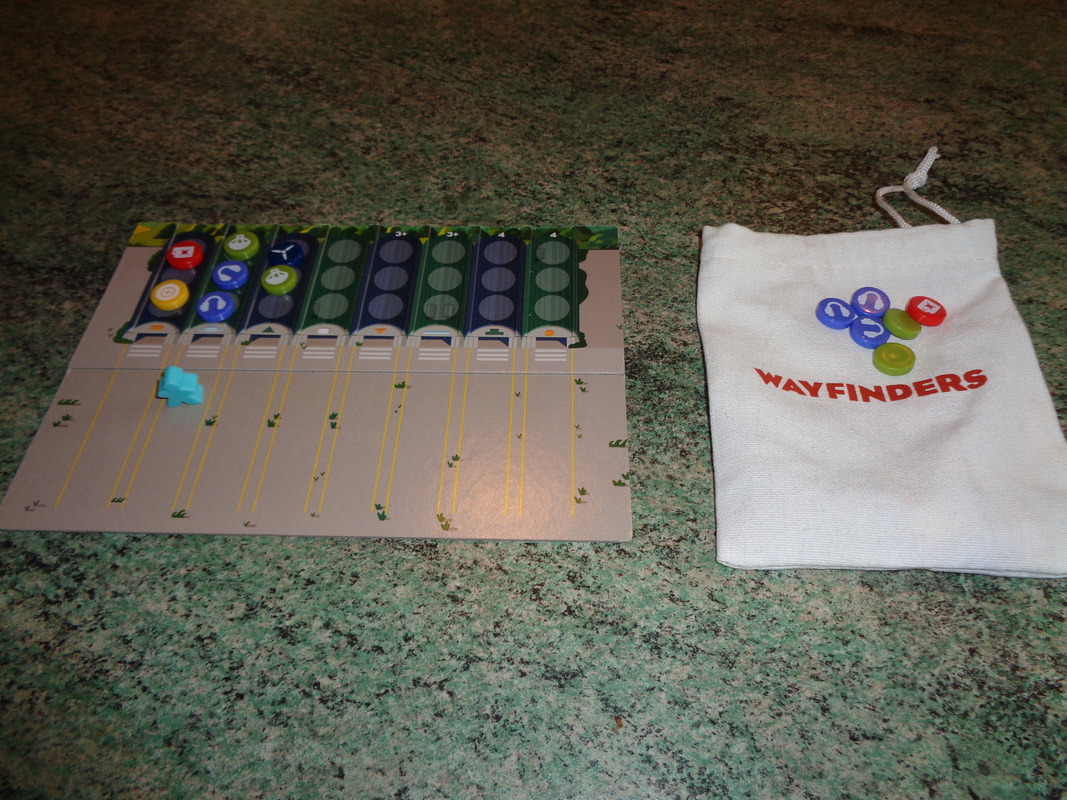
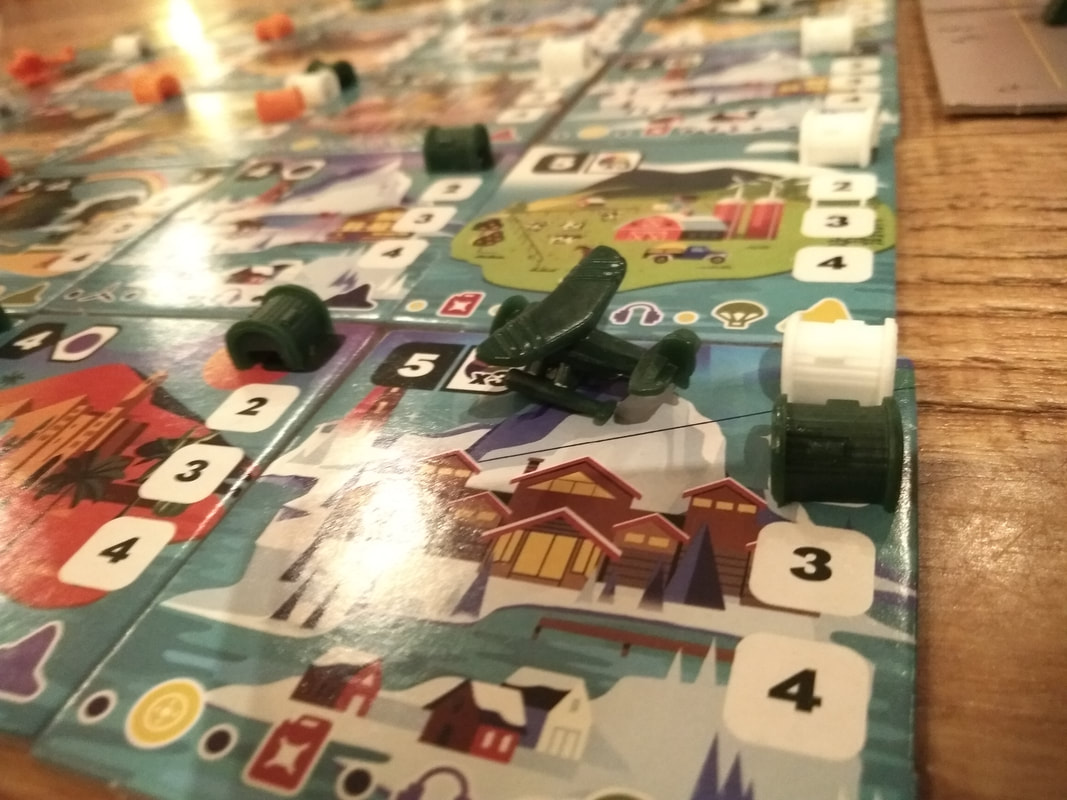
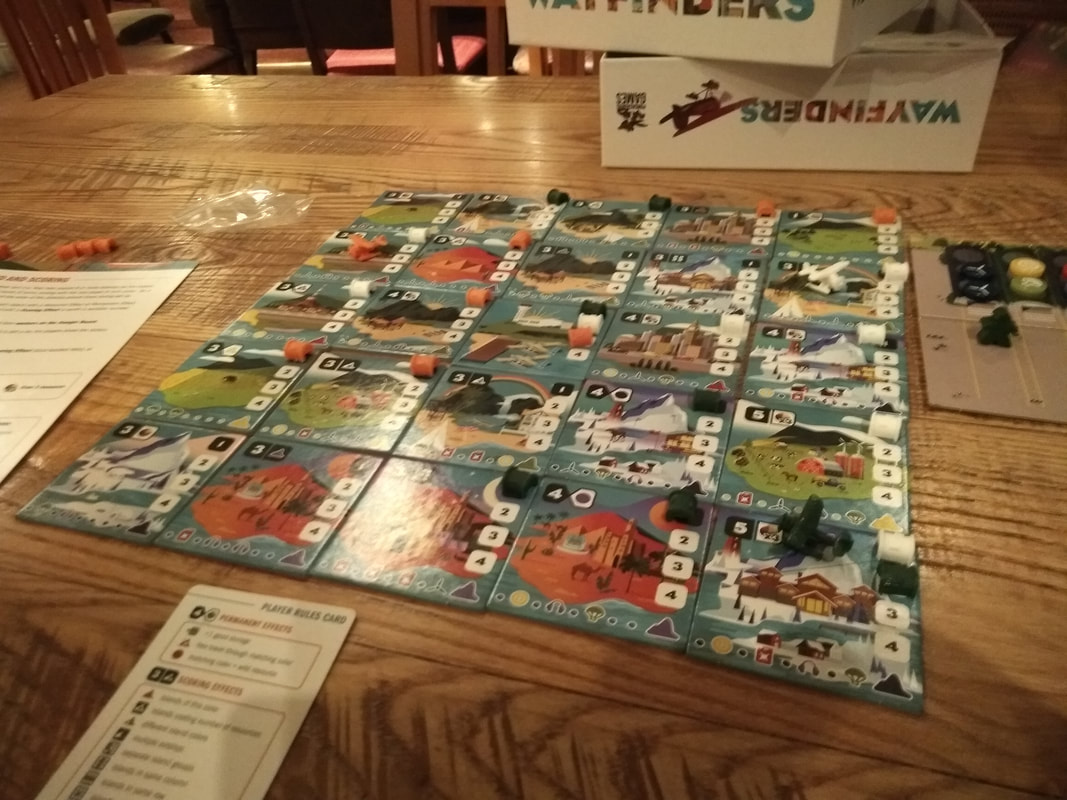
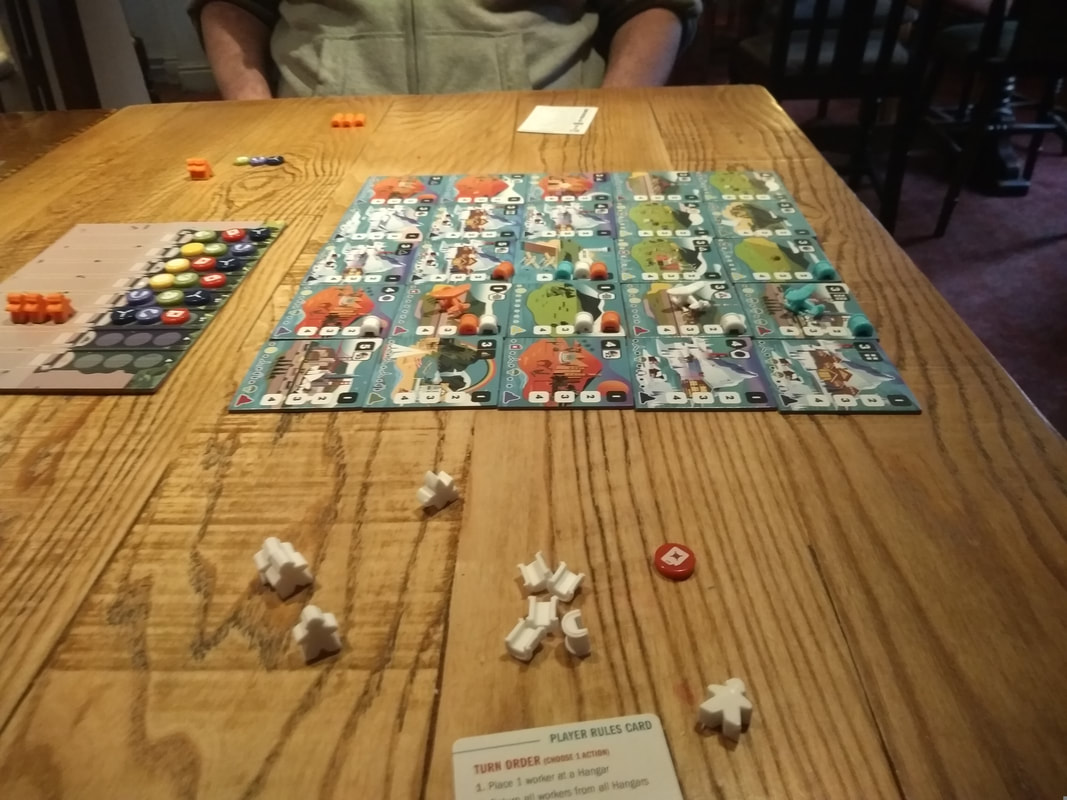
 RSS Feed
RSS Feed
